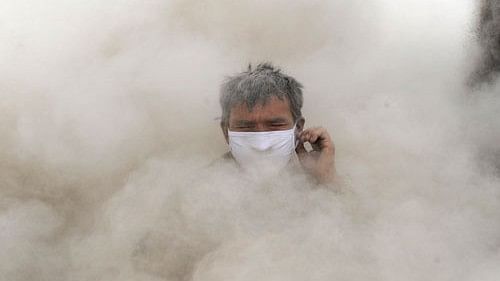
India is the world’s third most-polluted country.
Credit: Reuters Photo
The latest Air Quality Report, compiled by Swiss firm IQAir based on data from 134 countries, shows India in a very unflattering light, and should cause concern in all of South Asia. According to the report, India is the world’s third most-polluted country, after Bangladesh and Pakistan, and it has 83 of the world’s 100 most polluted cities. Ten of the top 11 most-polluted cities are in India. For the fifth time in the past six years, New Delhi has remained the world’s most-polluted capital city. The PM2.5 (particulate matter) level, which is the standard measure of air pollution, is 93 micrograms per cubic meter in Delhi, as against the World Health Organisation (WHO) norm of 5 micrograms per cubic meter. About 96% of the country’s population live with air quality seven times worse than WHO limits. Begusarai in Bihar is the globe’s ‘most-polluted metropolitan area’.
The revelations from the report are alarming because air pollution is a serious health hazard. According to some estimates, outdoor air pollution accounts for 2.18 million deaths per year in India, second only to China. It is cause for a range of ailments like asthma, pulmonary and cardiovascular diseases, and lung cancer. The danger can go up with increase in air pollution. The healthcare system in the country will not be able to cope with a surge in diseases caused by air pollution. The economic impact will also be very high, with rising healthcare costs and falling productivity together taking a toll of the economy. The challenge will be quite daunting because of the large population. Villages and smaller cities and towns were considered to be relatively free of air pollution. But the report shows that there is no safe hiding place in the country from air pollution. It also indicates that the deterioration of air quality has been quite steep in the recent past. The reasons for this will have to be studied.
The report makes an urgent case for measures to monitor air pollution, to take preventive steps and to prep up mitigation. The performance of state pollution control bodies, which are hampered by staff shortages and other problems, needs to be vastly improved. The reasons for Delhi’s pollution problems are known but they have not been effectively addressed in years. The National Clean Air Programme needs to be updated and implemented on an emergency basis. There is the need for adoption of better technologies, enforcement of rules and regulations, and for raising public awareness. This also calls for co-ordination and joint action between governments at all levels and various agencies.